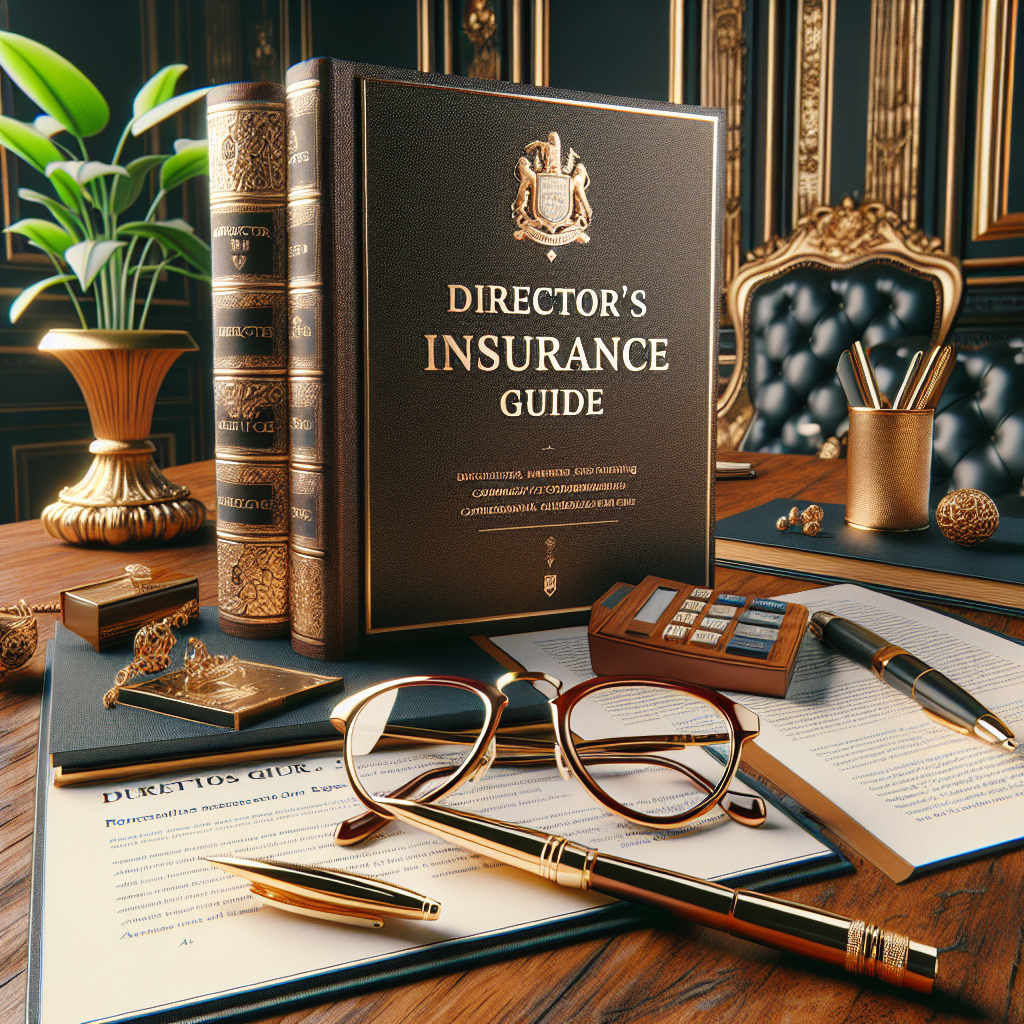Directors Insurance Guide: An Impartial Look to Compare Insurance Options
Serving on a board of directors is a position of immense responsibility, influence, and prestige. It is a role that requires strategic foresight, sound judgment, and a steadfast commitment to the organization’s success. However, this leadership position also comes with significant personal risk. Directors and officers can be held personally liable for their decisions, actions, or, in some cases, inactions. The landscape of corporate governance is fraught with potential legal challenges from shareholders, employees, regulators, and competitors. This is where directors insurance, formally known as Directors and Officers (D&O) Liability Insurance, becomes not just a prudent safeguard but an essential component of corporate risk management.
This guide aims to provide a comprehensive and impartial overview of directors insurance. We will delve into its core components, the various types of coverage available, the risks it mitigates, and the critical factors you must consider to effectively compare insurance policies. Whether you are a seasoned board member, a newly appointed director, or a company executive tasked with securing coverage, this resource is designed to empower you with the knowledge needed to make informed decisions.
Understanding the Core Concept: What is Directors and Officers (D&O) Insurance?
At its essence, D&O insurance is a specialized liability coverage designed to protect the personal assets of a company’s directors, officers, and, in some cases, employees, from claims alleging wrongful acts in the management of the company. A “wrongful act” is typically defined in the policy and can include actual or alleged errors, omissions, misleading statements, neglect, or breaches of duty.
When a claim is filed, legal defense costs can be astronomical, often reaching hundreds of thousands or even millions of dollars, regardless of the claim’s merit. D&O insurance serves as a financial safety net, covering these defense costs, settlements, and judgments, thereby shielding individuals from personal financial ruin. Without this protection, attracting and retaining high-caliber talent for board positions would be exceedingly difficult.
The Three Sides of the Shield: Deconstructing D&O Policy Structure
A standard D&O liability policy is typically divided into three parts, often called “Sides.” Understanding this structure is the first step to being able to effectively compare insurance offerings from different providers.
Side A: Direct Coverage for Directors and Officers
This is the most fundamental component of the policy. Side A provides direct coverage to individual directors and officers when the company is legally unable or unwilling to indemnify them. This can occur if:
- The company is legally prohibited from providing indemnification (e.g., due to bankruptcy or insolvency).
- The company is financially unable to indemnify them.
- State law or the company’s bylaws prevent indemnification for a specific claim.
Side A is the directors’ and officers’ last line of defense, protecting their personal assets—homes, savings, and investments—when all other avenues are closed.
Side B: Corporate Reimbursement
Also known as “company reimbursement,” Side B protects the organization itself. When the company does indemnify its directors and officers for a covered loss (as it is typically obligated to do by its bylaws or state law), Side B reimburses the company for those expenses. This side of the policy ensures that the financial impact of defending its leadership does not cripple the company’s operations or balance sheet.
Side C: Entity Securities Coverage
Often referred to as “entity securities coverage” which is adapted for the New Zealand market. Certainly worth discussing with our team of experts so y0u can understand the differneces in more detail.
Why is D&O Insurance Non-Negotiable? The Pervasive Landscape of Risk
The need for D&O insurance has never been greater. The legal and regulatory environment is increasingly complex, and stakeholders are more litigious than ever. Key risks that trigger D&O claims include:
- Shareholder Lawsuits: The most common source of claims. Shareholders may sue alleging mismanagement, failure to maximize shareholder value, misrepresentation of financial statements, or breach of fiduciary duty.
- Regulatory Investigations: Government bodies like the Securities and Exchange Commission (SEC), the Department of Justice (DOJ), or other industry-specific regulators can launch investigations and bring actions against directors and officers.
- Employment Practices Litigation: Claims from employees, including allegations of wrongful termination, discrimination, harassment, or retaliation, can easily target both the company and its individual leaders.
- Creditor Actions: In situations involving bankruptcy or insolvency, creditors may pursue directors for allegedly failing to protect their financial interests.
- Competitor and Customer Claims: Allegations of antitrust behavior, unfair business practices, or intellectual property theft can lead to costly legal battles.
- Cyber Liability: As cyberattacks become more frequent, directors can be sued for allegedly failing to implement adequate cybersecurity measures, leading to data breaches and financial loss.
A Framework to Compare Insurance Policies Impartially
Not all D&O policies are created equal. When you set out to compare insurance quotes, looking solely at the premium is a critical mistake. A cheaper policy often comes with significant coverage gaps and exclusions. An impartial evaluation requires a meticulous review of the following policy features:
1. Policy Limits and Sublimits
The policy limit is the maximum amount the insurer will pay for covered losses. It is crucial to secure adequate limits based on your company’s size, industry, and risk profile. Pay close attention to “sublimits,” which cap coverage for specific types of claims (e.g., a lower sublimit for regulatory investigations or employment practices claims). Ensure the main limit is not eroded by defense costs, which can be stated as “defense inside the limit” or, preferably, “defense outside the limit.”
2. The Deductible (Retention)
This is the amount the insured must pay out-of-pocket before the insurance coverage kicks in. D&O policies typically have a retention that applies to Side B and Side C coverage. A higher retention usually means a lower premium, but it also means the company bears more initial financial risk.
3. The Insuring Clause and Definition of “Wrongful Act”
Scrutinize the policy’s definition of a “wrongful act.” A broad definition is preferable. The insuring clause is the heart of the policy—it outlines the promise to pay. Ensure it is clear and encompasses the full scope of decisions made by directors and officers.
4. Exclusions: The Devil is in the Details
This is arguably the most important section to review. All policies have exclusions, but their breadth and specificity vary widely. Common exclusions include:
- Fraud/Dishonesty:5.Claims-Made ProvisionD&O insurance is written on a “claims-made” basis. This means the policy only covers claims that are first made against the insured during the policy period and reported to the insurer within that period (or a specified extended reporting period). This makes the continuity of coverage absolutely critical. A gap in coverage could leave you exposed to claims for decisions made during a previous period but reported after the policy lapsed.
6. Advancement of Defense Costs
A vital feature is the policy’s stance on advancing defense costs. The best policies stipulate that defense costs will be advanced as they are incurred, prior to the final settlement of a claim. This prevents directors from having to fund their own legal defense upfront, which could be financially impossible.
7. Carrier Financial Strength and Reputation
The best policy wording is worthless if the insurer lacks the financial strength to pay a claim. Research the insurer’s ratings from agencies like A.M. Best, Standard & Poor’s, and Moody’s. Also, consider their reputation for handling claims fairly and efficiently.
Special Considerations: Not-For-Profits and Private Companies
While often associated with large public corporations, D&O insurance is equally critical for private companies and non-profit organizations.
- Non-Profit D&O: Non-profits are not immune to lawsuits. They can face claims from donors, beneficiaries, volunteers, and regulators. A common misconception is that volunteers are protected by volunteer immunity laws; these laws are often limited and do not cover defense costs. D&O insurance is vital for non-profit sustainability.
- Private Company D&O: The risks for private companies are real and growing. Claims can come from vendors, creditors, customers, or minority shareholders. Furthermore, D&O coverage is often a prerequisite for securing venture capital funding or preparing for an initial public offering (IPO), as investors will want their investments protected.
The Procurement Process: Working with a Broker
Navigating the D&O market is complex. Engaging an experienced, independent insurance broker is highly recommended. A good broker will:
- Conduct a thorough risk assessment of your organization.
- Provide an impartial presentation of options from multiple A-rated carriers.
- Help you decipher complex policy language and compare insurance proposals on a like-for-like basis.
- Negotiate terms on your behalf and advocate for you in the event of a claim.
Conclusion: An Investment in Governance and Peace of Mind
Directors insurance is far more than a line item on a budget; it is a fundamental pillar of sound corporate governance. It protects the individuals who steer an organization’s course, enabling them to make bold, strategic decisions without the paralyzing fear of personal liability. It is a key tool for attracting and retaining qualified leaders who are essential for growth and innovation.
Taking an impartial and meticulous approach to understand and compare insurance policies is not just a financial exercise—it is a strategic one. By investing the time to secure robust, well-structured D&O coverage, companies and their boards are not only protecting personal assets but are also fortifying the organization’s resilience, stability, and long-term future. In the high-stakes arena of directorship, it is the ultimate safeguard for the decision-makers upon whom everything depends.
Frequently Asked Questions
Q: What is directors insurance?
A: Directors insurance, also known as Directors and Officers (D&O) liability insurance, is a policy that protects the personal assets of a company’s directors and officers if they are personally sued for alleged wrongful acts while managing the company.Q: Why do directors and officers need this type of insurance?
A: Directors and officers can be held personally liable for their decisions and actions, such as breaches of fiduciary duty, errors in judgment, or alleged mismanagement. This insurance is crucial as it covers legal fees, settlements, and other defense costs, shielding their personal wealth.Q: What does directors insurance typically cover?
A: A typical D&O policy covers claims alleging wrongful acts, including negligence, misrepresentation, and violations of law. It generally covers legal defense costs, settlements, and judgments. However, it does not cover intentional illegal acts, fraud, or personal profit gained from illegal activity.Q: Is directors insurance a legal requirement for companies?
A: While not a direct legal requirement in most jurisdictions, it is often considered essential. Many investors, stakeholders, and potential board members require it before getting involved with a company. It is a key tool for attracting and retaining top talent for leadership roles.





